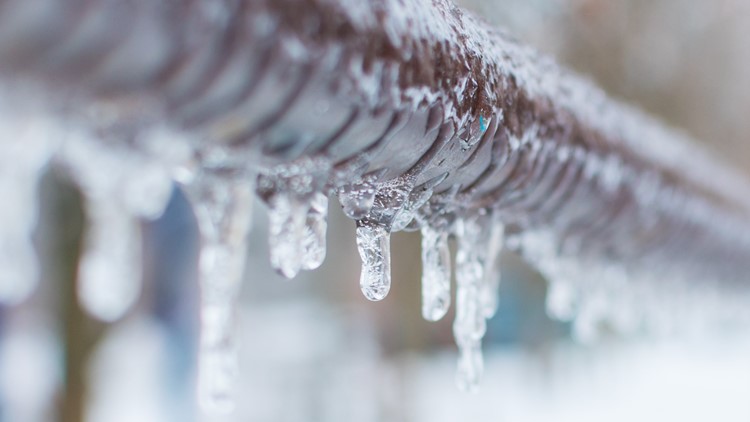Crucial Tips to Avoid Frozen Plumbing in Cold Weather
Crucial Tips to Avoid Frozen Plumbing in Cold Weather
Blog Article
Any individual maintains their own individual perception in relation to Preventing and dealing with frozen pipes.

Cold weather can damage your plumbing, especially by freezing pipes. Below's exactly how to prevent it from taking place and what to do if it does.
Introduction
As temperature levels decline, the risk of frozen pipes boosts, possibly resulting in expensive repair services and water damages. Recognizing just how to avoid frozen pipelines is essential for homeowners in cool climates.
Prevention Tips
Protecting susceptible pipelines
Cover pipes in insulation sleeves or utilize warmth tape to shield them from freezing temperature levels. Concentrate on pipes in unheated or external areas of the home.
Heating techniques
Keep indoor areas adequately warmed, particularly locations with plumbing. Open up closet doors to enable cozy air to circulate around pipes under sinks.
Exactly how to recognize frozen pipes
Search for lowered water flow from taps, unusual smells or sounds from pipes, and noticeable frost on revealed pipelines.
Long-Term Solutions
Architectural changes
Think about rerouting pipes away from outside walls or unheated areas. Include additional insulation to attics, basements, and crawl spaces.
Updating insulation
Buy top notch insulation for pipelines, attic rooms, and wall surfaces. Appropriate insulation assists keep consistent temperatures and minimizes the danger of icy pipes.
Protecting Exterior Pipes
Garden hose pipes and outdoor faucets
Separate and drain pipes yard pipes prior to winter. Set up frost-proof faucets or cover outside faucets with insulated caps.
Recognizing Frozen Pipes
What causes pipes to freeze?
Pipes ice up when revealed to temperature levels below 32 ° F (0 ° C) for expanded durations. As water inside the pipes freezes, it broadens, taxing the pipe wall surfaces and possibly triggering them to rupture.
Risks and problems
Icy pipes can lead to water system disturbances, property damages, and pricey fixings. Ruptured pipelines can flooding homes and create extensive architectural damages.
Indicators of Frozen Pipeline
Determining frozen pipes early can stop them from bursting.
What to Do If Your Pipes Freeze
Immediate activities to take
If you think icy pipelines, keep taps open to eliminate stress as the ice thaws. Utilize a hairdryer or towels soaked in hot water to thaw pipelines gradually.
Final thought
Protecting against icy pipelines needs proactive actions and quick actions. By recognizing the causes, indications, and safety nets, house owners can shield their plumbing throughout cold weather.
5 Ways to Prevent Frozen Pipes
Drain Outdoor Faucets and Disconnect Hoses
First, close the shut-off valve that controls the flow of water in the pipe to your outdoor faucet. Then, head outside to disconnect and drain your hose and open the outdoor faucet to allow the water to completely drain out of the line. Turn off the faucet when done. Finally, head back to the shut-off valve and drain the remaining water inside the pipe into a bucket or container. Additionally, if you have a home irrigation system, you should consider hiring an expert to clear the system of water each year.
Insulate Pipes
One of the best and most cost-effective methods for preventing frozen water pipes is to wrap your pipes with insulation. This is especially important for areas in your home that aren’t exposed to heat, such as an attic. We suggest using foam sleeves, which can typically be found at your local hardware store.
Keep Heat Running at 65
Your pipes are located inside your walls, and the temperature there is much colder than the rest of the house. To prevent your pipes from freezing, The Insurance Information Institute suggests that you keep your home heated to at least 65 degrees, even when traveling. You may want to invest in smart devices that can keep an eye on the temperature in your home while you’re away.
Leave Water Dripping
Moving water — even a small trickle — can prevent ice from forming inside your pipes. When freezing temps are imminent, start a drip of water from all faucets that serve exposed pipes. Leaving a few faucets running will also help relieve pressure inside the pipes and help prevent a rupture if the water inside freezes.
Open Cupboard Doors
Warm your kitchen and bathroom pipes by opening cupboards and vanities. You should also leave your interior doors ajar to help warm air circulate evenly throughout your home.

I ran across that entry about Preventing and dealing with frozen pipes while doing a lookup on the internet. For those who enjoyed reading our page please remember to pass it around. Thank you for being here. Don't forget to stop by our website back soon.
Request Estimate Report this page